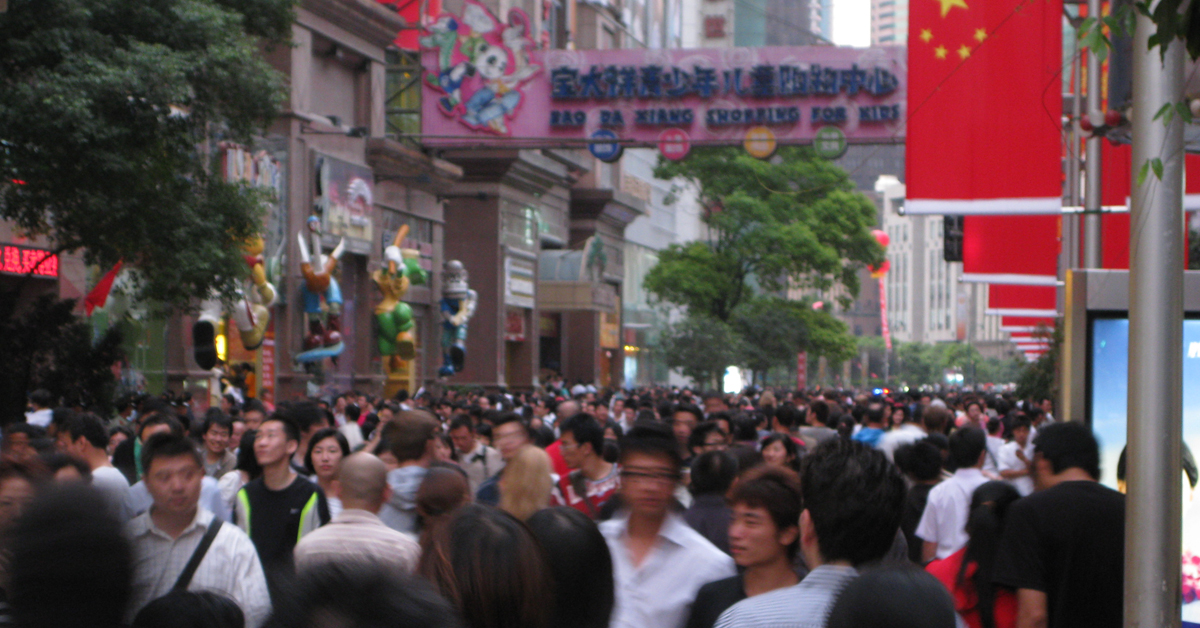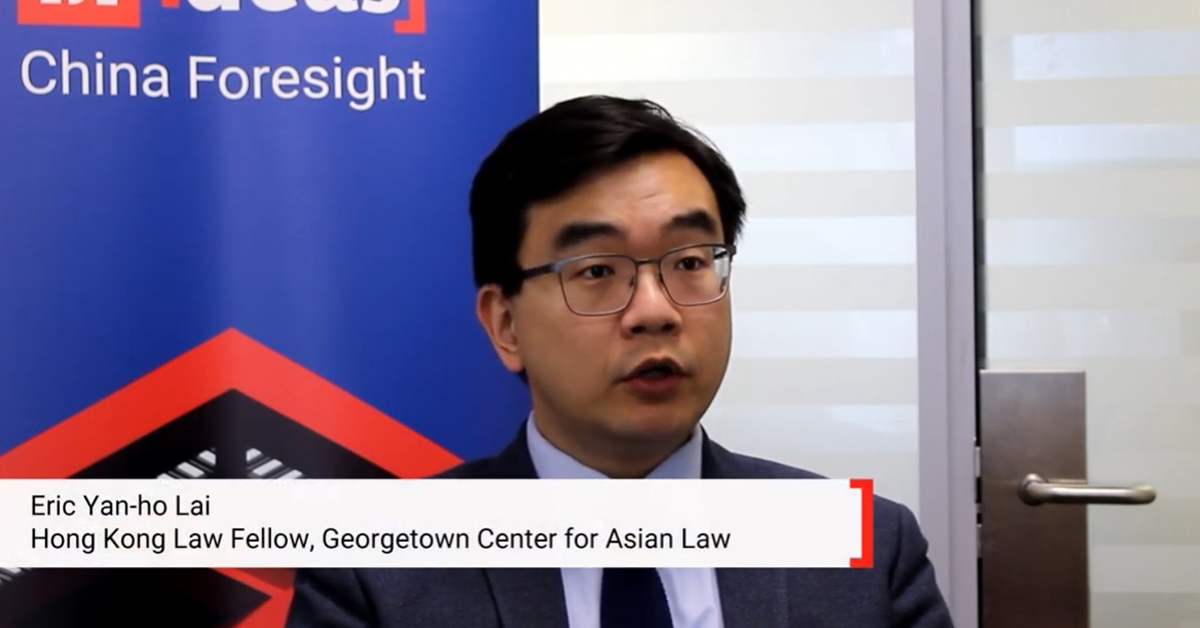Revolution and Counterrevolution in China: The Paradoxes of Chinese Struggle was released by Verso books in September 2021.
- Escaping the kind of acute transitional contractions typical of shock therapy post-communism, China’s steady transformation beneath the surface amounts to a shocking big bang in the long run.
- How China arrived at the critical juncture where it finds itself can neither be natural nor inevitable, nor sustainable. This passage is attributable to a unique mass party of exceptional organisational capacity, gradually altering its class character and powerbase to adapt to changing circumstances.
- Any prospective political reform in China must be socially substantiated and prepared to answer such questions as which socialism, what democracy and whose legality.
The People’s Republic of China was founded upon the victory of the Chinese communist revolution in 1949 (as Hu Feng declared, ‘time has begun’), and is foundationally defined by this ‘most massive – and perhaps the most heroic – revolution in world history’ (Maurice Meisner). Unlike the narrow 1911 republican revolution, the epic revolution led by the Chinese Communist Party committed to both national and social liberation. By overthrowing foreign and domestic misrules, independence and unity paved the way for socioeconomic development.
The resulting structurally socialist political economy and corresponding egalitarian and participatory politics and culture relieved the plight of working masses, including women and other subordinated social groups, creating a self-consciously sovereign people in the process. A popularly supported state with moral confidence could then mobilise resources to rapidly accumulate capital and labour, buttressed by a rudimentary yet inclusive ‘public good regime’ aiming to meet basic needs. These novel developmental dynamics, central-local, urban-rural and so forth, were such that new China could manage to withstand imperialist blockades and outperform others at a similar income level, thoroughly transforming one of the world’s largest and poorest nations. The compelling fact that by the late 1970s before any ‘market miracle’, China had already built up a comprehensive industrial edifice and had seen both its national population and life expectancy nearly doubled, speaks for itself.
If such autonomous achievements are the results of subjugated peoples breaking free of their shackles, then revolutionary modernisation is a counterexample to the supposedly universal paradigm of capitalist modernity, predicated on colonial modernisation. Remarkably, the symbolic boundary of 1949 remains alive in everyday Chinese today: differentiating between ‘old’ and ‘new’ societies, or the times ‘before’ and ‘after’ liberation. In this sense, the modern rise (or ‘resurgence’ as economic historians would prefer) of China instigated with the founding of the PRC, rather than its latest global integration.
Even with such long-lasting accomplishments to point to, true defenders of China’s revolutionary and socialist legacies cannot be unprincipled apologists. Uneven development entails latent ‘privilege’ as much as anguish of backwardness. Tragic strategic errors and policy blunders, from reckless leadership decisions to extensive mistreatments involving ‘contradictions among the people’, might have been predictable for a highly experimental trajectory, especially in defiance of overwhelming international antagonism. And in the end, the ‘continuous revolution’ succeeded neither in overcoming bureaucratic perversion nor institutionalising worker power. The value of these goals and the extraordinary efforts toward them, however, cannot be denied.
Holding the 1949 benchmark constant as the normative gauge, a balance sheet of the evolving nature of Chinese state and society throughout pre- and post-reform is attainable. The taken-for-granted narrative of a coherent reform journey of ‘forty years’, for instance, ignores vicissitudes along the way. The 1978 move to undertake socialist self-readjustment enjoyed a broad mandate. The long 1980s, amid early signs of derailing synchronised with surging neoliberalism in the west, were reformist enough to be distinguished from radical neoliberalisation in the following decades, with the turning point of events around 1989. It was not until the 1990s that the initial consensus broke down, when prioritised foreign investment, imposed privatisation, marketised public services and a cross sectoral ‘rural triple crisis’ vastly injured livelihoods. The next decade, which began promisingly with a ‘pro-people’ gesture ended up correcting little of a course marred by powerfully networked interests, and only boosted by China’s WTO accession. Any assessment of the fourth decade, into the fifth and unfolding, which claims a new era while seizing the recycled torch of ‘free trade’, is pending.
If it was the predicament of Chinese socialism that compelled reforms, the latter’s radicalisation in the making of ‘capitalism with Chinese characteristics’ accrued its own crises. The horrendous post-Mao revenge of bureaucracy led the way to the collusion of public office and private money – unimaginable even in the sharpest new class theory. In an essentially conflictual capital-labour relationship, subalternised workers, many on precarious contracts, barely obtain their minimal formal rights. Labour disputes are handled as a matter of legal procedures pretending to be apolitical for atomised individuals, and not as a social justice obligation. The disempowerment of a constitutionally designated ‘leading class’, not least of two generations of migrant workers, makes the imperfect socialist state in the past and, in the same vein, state feminism seem hauntingly fair by comparison.
In rural China, neither collectivisation nor decollectivisation touched the equal land rights gained from revolutionary land reform. This enables today’s government to tap into a vast stock of previous socialist accumulation as a pressure valve, safety velvet, and crutch of growth: the ‘competitive advantage’ of a disciplined and low waged quality workforce in manufacturing for export; avoidance of tribulations of landlessness such as the formation of a reserve army in inner-city slums; a crisis-absorbing home front; macro stability. The titling enforcement campaign in the 2010s only further weakened collective land management to hasten agrarian capitalisation and urbanisation. Yet an eco-technologically advanced moral economy of reorganised petty farming should have a future, and is indeed pivotal for the peasant commons, national food security, and coordinated welfare. Moreover, cheap labour is ultimately a disadvantage for less developed producers while shoring up global capital’s superprofits and rents in an international market of unequal exchange and unfair division of labour.
Asymmetrical globalisation is a dependency trap for countries lacking or losing will and ability to resist the negative concomitants of global capitalism. By mutating its ruling order to a neoliberal outlook, and thereby (re)positioning itself globally, China has been producing for the world – at a stunning cost at home, from labour deprivation and social polarisation to pollutions and resource depletion. It has tolerated foreign and comprador capital to overgrow even in the commanding heights, accelerating capital’s last frantic push to conquer a market of continental scale.
There are wider implications. A desire to reach great power status (or to join lieqiang) in the name of national rejuvenation is not only geopolitically delusional but also chauvinistic and geared towards perilous resource chasing and hegemonic rivalries. China’s neoglobalist engagements may buy temporary synergy but can hardly be appealing until they offer an alternative model to authoritarian capitalism. Likewise, if detached from their socially justifiable connotations, merely nationalist interpretations of sovereignty concerning unification or territorial assertions can be self-invalidating and more damaging than any external sabotage. The substance and image of the very ‘one country’, never a monolith, is determining. In this connection, also challenging is contested identity and spatial politics for a unitary state – the PRC, a state-nation of equal citizenship, presupposes cultural and institutional multinationality and counts on a semi-federal governing structure for ethno-regional autonomy. Inadvertently, combined impacts of market pathologies, commercial homogenisation, and assimilationist-oppressive responses to suspected terrorist separatism have undermined intergroup trust and solidarity. Without appreciating the contrast between outcomes of recognition and solidarity deriving from the earlier spirit of revolutionary (inter)nationalism, determined to redeem the historical wrongs done to the national minorities and the more imprudent schemes of the current sinicisation project, Beijing’s ethnic policy quandaries cannot be understood.
If development paid for by intense exploitation and corrosion has long been humanly, socially and environmentally indefensible, what explains the 21st century spectacle of the CCP staying power? Clearly, how China arrived at the critical juncture where it finds itself can neither be natural nor inevitable, nor sustainable. The passage may have been murky or convoluted, but is a macro-artwork nonetheless, attributable to a unique mass party of exceptional organisational capacity, gradually altering its class character and powerbase to adapt to changing circumstances. Facilitating as much as constraining this work is a strong legitimacy inertia, as the regime continues to live off its past laurels – the prefix ‘post’ for post-socialism signifies a path-dependent condition. Poverty eradication, the greatest in scope the world has ever seen, is one example; an expanding ‘middle strata’ that proves a trickle-down effect of growth, another.
Escaping the kind of acute transitional contractions typical of shock therapy post-communism, however, China’s steady transformation beneath the surface amounts to a shocking big bang in the long run. The undoing of the revolution is apparent: in the hardships experienced by factory and construction agency workers or gig labour in an ever more financialised tertiary sector; the unaffordability problem in health and old age care or education beyond the compulsory first nine years; broken families and left behind children; extreme inequalities and ethnic tensions; pervasive corruption, worst of all among the regulators and judges themselves; consumerist sociocultural erosion and money fetishism; censorship and arbitrary coercion. Abandoned is the communist ‘magic weapon’ of party building through the mass line and theoretical struggles, hence the spread of political apathy, opportunism and philistinism along with the repudiation of deep-rooted commitments. Ideological degeneration is epitomised by deformed Marxism authorising capitalist rationality and courting conservative traditionalism.
As capitalist injustice and brutality keeps interrogating the officials who have vowed to serve the people, Marxist socialism becomes more meaningful as a protest language articulated on the regime’s own terms. The 2018 Jasic incident exemplifies this paradox. Any prospective political reform in China will therefore have to be socially substantiated and prepared to answer such questions as which socialism, what democracy and whose legality.
Development is bound to be an open contour, sanctioning paths not taken and the logic of indeterminacy and contingency. A global system that inflicts cataclysms on the planet has hit hard ecological limits. Climate struggle is also a class war, as the world’s richest 1% live lavishly and generate emissions double those of the entire most depressed half of the human population – and China now takes a large part in both of these demographics. Carbon politics has to be post-capitalist to break the deadlock of mismanagement driven by profits. As China is increasingly vulnerable to exogenous risks, it must guard its defences, above all capital account control and public land, and defeat imperialist war drumming, cold and hot alike.
Signals of reorientation from the centre riding on its success in halting the covid-19 pandemic – greening pledges, reining in internet-platform monopolies, and pursuing ‘common prosperity’ – are still hindered from within. The privileged political elites are themselves among those who got rich first, after all. Several People’s Daily editorials have reconfirmed the government’s ‘unswerving commitment’ to the private sector and financial liberalisation. The president of the Chinese Academy of Social Sciences insists on efficiency over fairness and assures his audience as policymaking advisers that taxing the wealthy on capital gains, property and inheritance is presently unrealistic. Redistribution is misinterpreted as the grace of philanthropy in the official and mass media. How these contradictory impetuses play out will depend on politics, imagination, and chance.
This article gives the views of the author, and not the position of the China Foresight Forum, LSE IDEAS, nor The London School of Economics and Political Science. The contents of this blog are based on the author’s latest book, Revolution and Counterrevolution in China: The Paradoxes of Chinese Struggle, Verso, 2021.





